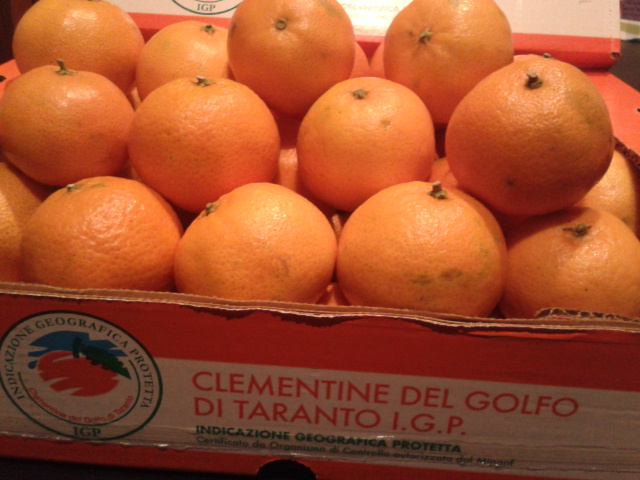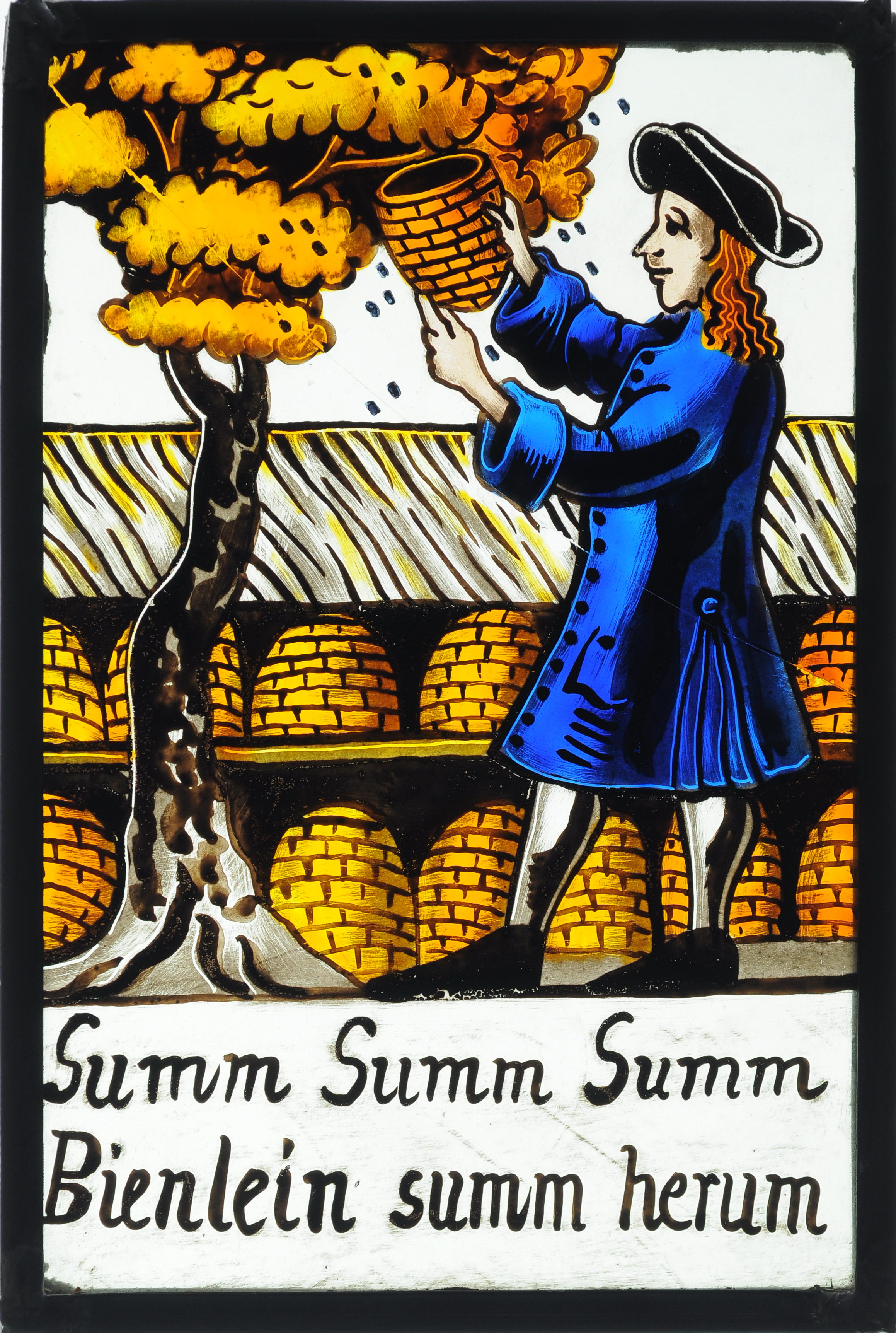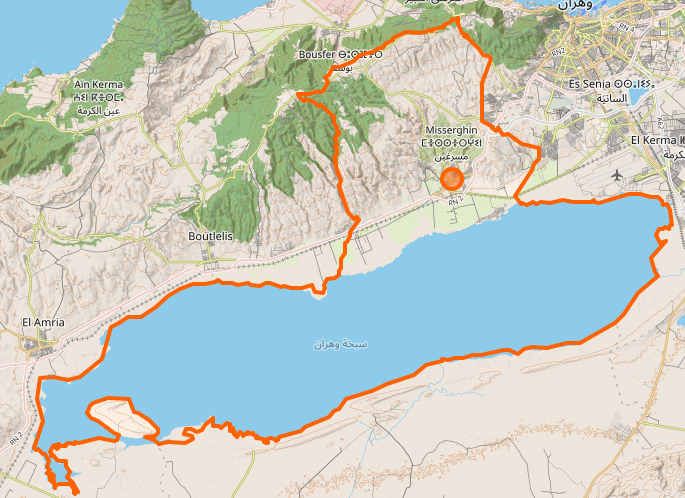|
Clementine (fruit)
A clementine (''Citrus × clementina'') is a tangor, a citrus fruit hybrid between a willowleaf mandarin orange ( ''C.'' × ''deliciosa'') and a sweet orange (''C. × sinensis''), named in honor of Clément Rodier, a French missionary who first discovered and propagated the cultivar in Algeria. The exterior is a deep orange colour with a smooth, glossy appearance. Clementines can be separated into 7 to 14 segments. Similar to tangerines, they tend to be easy to peel. They are typically juicy and sweet, with less acid than oranges. Their oils, like other citrus fruits, contain mostly limonene as well as myrcene, linalool, α-pinene and many complex aromatics. They are sometimes sold under the name Easy-peelers. History The clementine is a spontaneous citrus hybrid that arose in the late 19th century in Misserghin, Algeria, in the garden of the orphanage of the French Missionary Brother Clément Rodier, for whom it would be formally named in 1902. Some sources have attribu ... [...More Info...] [...Related Items...] OR: [Wikipedia] [Google] [Baidu] |
Taxon
In biology, a taxon (back-formation from ''taxonomy''; : taxa) is a group of one or more populations of an organism or organisms seen by taxonomists to form a unit. Although neither is required, a taxon is usually known by a particular name and given a particular ranking, especially if and when it is accepted or becomes established. It is very common, however, for taxonomists to remain at odds over what belongs to a taxon and the criteria used for inclusion, especially in the context of rank-based (" Linnaean") nomenclature (much less so under phylogenetic nomenclature). If a taxon is given a formal scientific name, its use is then governed by one of the nomenclature codes specifying which scientific name is correct for a particular grouping. Initial attempts at classifying and ordering organisms (plants and animals) were presumably set forth in prehistoric times by hunter-gatherers, as suggested by the fairly sophisticated folk taxonomies. Much later, Aristotle, and later st ... [...More Info...] [...Related Items...] OR: [Wikipedia] [Google] [Baidu] |
Linalool
Linalool () refers to two enantiomers of a naturally occurring terpene alcohol found in many flowers and spice plants. Together with geraniol, nerol, and citronellol, linalool is one of the rose alcohols. Linalool has multiple commercial applications, the majority of which are based on its pleasant scent (floral, with a touch of spiciness). A colorless oil, linalool is classified as an acyclic monoterpenoid. In plants, it is a metabolite, a volatile oil component, an antimicrobial agent, and an aroma compound. Linalool has uses in manufacturing of soaps, fragrances, food additives as flavors, household products, and insecticides. Esters of linalool are referred to as linalyl, e.g. linalyl pyrophosphate, an isomer of geranyl pyrophosphate. The word ''linalool'' is based on '' linaloe'' (a type of wood) and the suffix '. In food manufacturing, it may be called ''coriandrol''. Occurrence Both enantiomeric forms are found in nature: (''S'')-linalool is found, for exam ... [...More Info...] [...Related Items...] OR: [Wikipedia] [Google] [Baidu] |
Beekeeper
A beekeeper is a person who keeps honey bees, a profession known as beekeeping. The term beekeeper refers to a person who keeps honey bees in beehives, boxes, or other receptacles. The beekeeper does not control the creatures. The beekeeper owns the hives or boxes and associated equipment. The bees are free to forage or leave (Swarming (honey bee), swarm) as they desire. Bees usually return to the beekeeper's hive as the hive presents a clean, dark, sheltered home. Beekeepers are also called honey farmers, apiarists, or less commonly, apiculturists (both from the Latin ''Wiktionary:apis, apis'', bee; cf. apiary). Purposes of beekeeping Value of honey bees Honey bees produce commodities such as honey, beeswax, pollen, propolis, and royal jelly. Some beekeepers also raise Queen (bee), queens and other bees to sell to other farmers, and to satisfy scientific curiosity. Beekeepers also use honeybees to provide pollination services to fruit and vegetable growers. Many people keep ... [...More Info...] [...Related Items...] OR: [Wikipedia] [Google] [Baidu] |
Cross-pollination
Xenogamy (Greek ''xenos''=stranger, ''gamos''=marriage) is the transfer of pollen grains from the anther to the stigma of a different plant. This is the only type of cross pollination which during pollination brings genetically different types of pollen grains to the stigma. The term xenogamy (along with geitonogamy and autogamy) was first suggested by Kerner in 1876.{{cite book, last=Darwin, first=Charles, title=More Letters of Charles Darwin, Volume 2, date=August 2006, publisher=Echo Library, isbn=978-1-4068-0482-9 , url=https://books.google.com/books?id=X9vMhLOiTmQC&dq=Xenogamy&pg=PA668, access-date=25 February 2012, page=668 Cross-pollination involves the transfer of pollen grains from the flower of one plant to the stigma of the flower of another plant. The main characteristics which facilitate cross-pollination are: * Herkogamy: Flowers possess some mechanical barrier on their stigmatic surface to avoid self-pollination, e.g. presence of gynostegium and pollinia in '' C ... [...More Info...] [...Related Items...] OR: [Wikipedia] [Google] [Baidu] |
University Of California Citrus Experiment Station
The University of California Citrus Experiment Station is the founding unit of the University of California, Riverside campus in Riverside, California, United States. The station contributed greatly to the cultivation of the orange and the overall agriculture industry in California. Established February 14, 1907, the station celebrated its 100th anniversary in 2007. The University of California Citrus Experiment Station The Rubidoux Laboratory The Southern California "citrus belt" developed rapidly in the 1870s after experimental navel orange plantings were conducted in Riverside, using cuttings introduced from Bahia, Brazil. Within two decades commercial orange groves stretched eastward from Pasadena to Redlands beneath the foothills of the San Gabriel and San Bernardino mountains. A citrus grower named John Henry Reed is credited with first proposing a state-funded scientific experiment station specifically for citrus research in Southern California, and organized a vigoro ... [...More Info...] [...Related Items...] OR: [Wikipedia] [Google] [Baidu] |
University Of California, Riverside
The University of California, Riverside (UCR or UC Riverside) is a public university, public Land-grant university, land-grant research university in Riverside, California, United States. It is one of the ten campuses of the University of California system. The main campus sits on in a suburban district of Riverside with a branch campus of in Palm Desert, California, Palm Desert. In 1907, the predecessor to UCR was founded as the UC Citrus Experiment Station, which conducted research in biological pest control and the use of plant hormone, growth regulators. UCR's undergraduate UCR College of Humanities, Arts, and Social Sciences, College of Letters and Science opened in 1954. The Regents of the University of California declared UCR a general campus of the system in 1959, and graduate students were admitted in 1961. To accommodate an enrollment of 21,000 students by 2015, more than $730 million has been invested in new construction projects since 1999. UCR plans to have ... [...More Info...] [...Related Items...] OR: [Wikipedia] [Google] [Baidu] |
Satsuma (fruit)
Satsuma may refer to: * Satsuma (fruit), a citrus fruit * ''Satsuma'' (gastropod), a genus of land snails Places Japan * Satsuma, Kagoshima, a Japanese town * Satsuma District, Kagoshima, a district in Kagoshima Prefecture * Satsuma Domain, a southern Japanese feudal domain * Satsuma Peninsula, in Kagoshima Prefecture * Satsuma Province, a former province * Japanese battleship ''Satsuma'' of the Imperial Navy United States * Satsuma, Alabama * Satsuma, Louisiana * Satsuma, Texas * Satsuma, Florida Other uses * Satsuma Loans, a UK-based short-term loan company * Satsuma plum, a type of plum * Satsuma Rebellion, a revolt * Satsuma ware, a type of Japanese pottery * Biwa, a lute with a form known as Satsuma biwa * Satsuma, the car the player builds and drives in the video game '' My Summer Car'' {{disambiguation, geo ... [...More Info...] [...Related Items...] OR: [Wikipedia] [Google] [Baidu] |
People's Republic Of China
China, officially the People's Republic of China (PRC), is a country in East Asia. With population of China, a population exceeding 1.4 billion, it is the list of countries by population (United Nations), second-most populous country after India, representing 17.4% of the world population. China spans the equivalent of five time zones and Borders of China, borders fourteen countries by land across an area of nearly , making it the list of countries and dependencies by area, third-largest country by land area. The country is divided into 33 Province-level divisions of China, province-level divisions: 22 provinces of China, provinces, 5 autonomous regions of China, autonomous regions, 4 direct-administered municipalities of China, municipalities, and 2 semi-autonomous special administrative regions. Beijing is the country's capital, while Shanghai is List of cities in China by population, its most populous city by urban area and largest financial center. Considered one of six ... [...More Info...] [...Related Items...] OR: [Wikipedia] [Google] [Baidu] |
Guangdong
) means "wide" or "vast", and has been associated with the region since the creation of Guang Prefecture in AD 226. The name "''Guang''" ultimately came from Guangxin ( zh, labels=no, first=t, t= , s=广信), an outpost established in Han dynasty near modern Wuzhou, whose name is a reference to an order by Emperor Wu of Han to "widely bestow favors and sow trust". Together, Guangdong and Guangxi are called ''Liangguang, Loeng gwong'' ( zh, labels=no, first=t, t=兩廣, s=两广 , p=liǎng guǎng) During the Song dynasty, the Two Guangs were formally separated as ''Guǎngnán Dōnglù'' ( zh, first=t, t=廣南東路, s=广南东路, l=East Circuit (administrative division), Circuit in Southern Guang , labels=no) and ''Guǎngnán Xīlù'' ( zh, first=t, t=廣南西路, s=广南西路, l=West Circuit (administrative division), Circuit in Southern Guang , labels=no), which became abbreviated as ''Guǎngdōng Lù'' ( zh, first=t, t=廣東路, s=广东路 , labels=no) and ''Guǎngxī Lù ... [...More Info...] [...Related Items...] OR: [Wikipedia] [Google] [Baidu] |
Guangxi
Guangxi,; officially the Guangxi Zhuang Autonomous Region, is an Autonomous regions of China, autonomous region of the China, People's Republic of China, located in South China and bordering Vietnam (Hà Giang Province, Hà Giang, Cao Bằng Province, Cao Bằng, Lạng Sơn Province, Lạng Sơn, and Quảng Ninh Provinces) and the Gulf of Tonkin. Formerly a Provinces of China, province, Guangxi became an autonomous region in 1958. Its current capital is Nanning. Guangxi's location, in mountainous terrain in the far south of China, has placed it on the frontier of Chinese civilization throughout much of History of China, Chinese history. The current name "Guang" means "expanse" and has been associated with the region since the creation of Guang Prefecture in 226 AD. It was given Administrative divisions of the Yuan dynasty, provincial level status during the Yuan dynasty, but even into the 20th century, it was considered an open, wild territory. The abbreviation of the regi ... [...More Info...] [...Related Items...] OR: [Wikipedia] [Google] [Baidu] |
Misserghin
Misserghin (sometimes spelled Miserghin or Mizerghin) is a city in Boutlélis District, Oran Province, Algeria. Its territory is mainly covered by a salt lake called the ''Sebkha of Oran, the territory of the commune is extensive (42,828 ha) and includes the great salt depression''. In city, the known fruit clementine were discovered by Father Clément Rodier in 1892. Although It is famous for its agriculture and especially for the clementine variety of citrus fruits, native to the locality. there is really only 13,350 ha of land available, of which 1/3 (4,036 ha) constitutes the useful agricultural area and 9,109 ha (almost 2/3) the forest estate. Dr. Chérif Sid Cara, one of the few Algerian Muslims who supported the French generals' putsch in April 1961, was the last mayor of Misserghin under French rule. Location Misserghin is located 5 kilometers west of Oran. The territory of the commune is extensive (42,828 ha) and includes the great salt depression, the Sebkha of Ora ... [...More Info...] [...Related Items...] OR: [Wikipedia] [Google] [Baidu] |
Hybrid (biology)
In biology, a hybrid is the offspring resulting from combining the qualities of two organisms of different varieties, subspecies, species or genera through sexual reproduction. Generally, it means that each cell has genetic material from two different organisms, whereas an individual where some cells are derived from a different organism is called a chimera. Hybrids are not always intermediates between their parents such as in blending inheritance (a now discredited theory in modern genetics by particulate inheritance), but can show hybrid vigor, sometimes growing larger or taller than either parent. The concept of a hybrid is interpreted differently in animal and plant breeding, where there is interest in the individual parentage. In genetics, attention is focused on the numbers of chromosomes. In taxonomy, a key question is how closely related the parent species are. Species are reproductively isolated by strong barriers to hybridization, which include genetic and morph ... [...More Info...] [...Related Items...] OR: [Wikipedia] [Google] [Baidu] |








